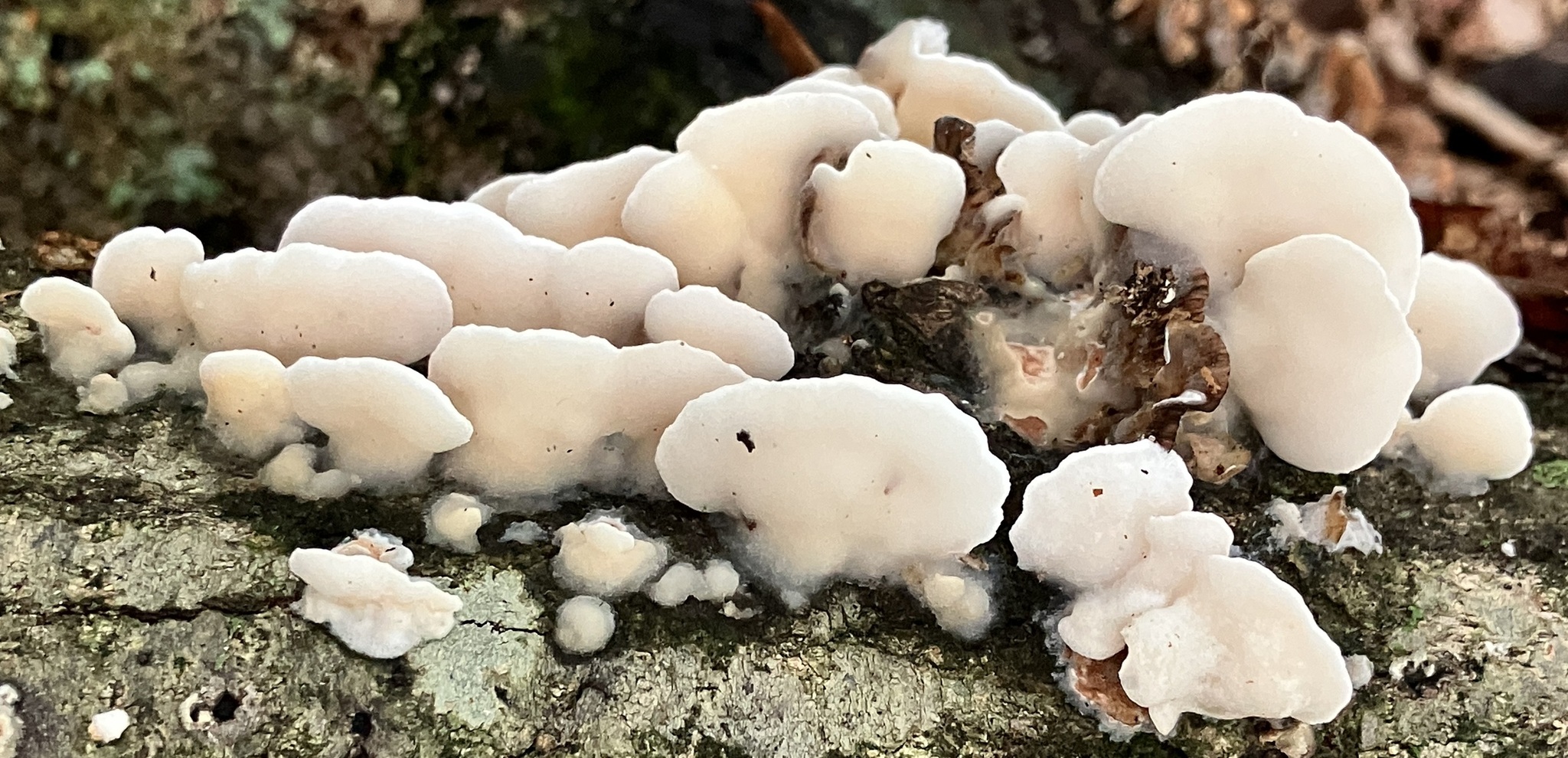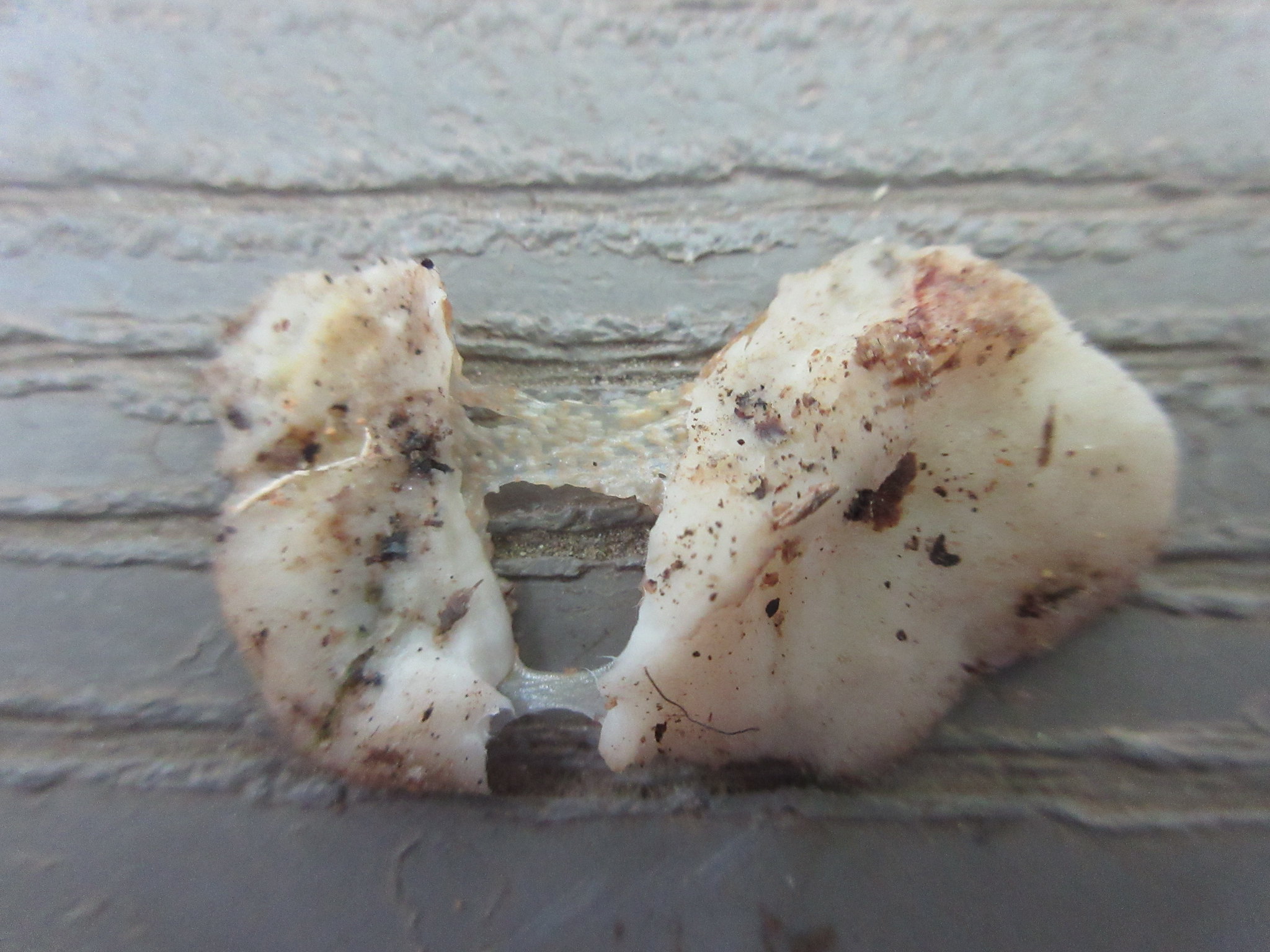Map Snapshot













42 Records
Seasonality Snapshot
Eating mushrooms can be dangerous. One should do so only with expert advice and great care. MBP accepts no liability for injury sustained in consuming fungi or other biodiversity. Use of media featured on Maryland Biodiversity Project is only permitted with express permission of the photographer.
Gloeoporus dichrous in Maryland (Date obscured). (c) Cindi Fitzgerald, some rights reserved (CC BY-NC).
View Record Details
Media by
cin579 via iNaturalist.
Gloeoporus dichrous in Maryland (Date obscured). (c) Cindi Fitzgerald, some rights reserved (CC BY-NC).
View Record Details
Media by
cin579 via iNaturalist.
Fertile surface of Gloeoporus dichrous in Howard Co., Maryland (9/30/2011).
Media by
Joanne Solem.
Gloeoporus dichrous from above in Howard Co., Maryland (9/30/2011).
Media by
Joanne Solem.
Gloeoporus dichrous in Frederick Co., Maryland (11/23/2020). (c) Emilio Concari, some rights reserved (CC BY-NC).
View Record Details
Media by
Emilio Concari.
Gloeoporus dichrous in Howard Co., Maryland (9/30/2011). Photo shows split cap stretched to show rubbery layer.
Media by
Joanne Solem.
Gloeoporus dichrous in Frederick Co., Maryland (11/23/2020). (c) Emilio Concari, some rights reserved (CC BY-NC).
View Record Details
Media by
Emilio Concari.
Gloeoporus dichrous in Howard Co., Maryland (10/2/2014). (c) Joanne and Robert Solem, some rights reserved (CC BY-NC).
View Record Details
Media by
Joanne Solem.
Gloeoporus dichrous in Howard Co., Maryland (10/2/2014). (c) Joanne and Robert Solem, some rights reserved (CC BY-NC).
View Record Details
Media by
Joanne Solem.
Gloeoporus dichrous in Howard Co., Maryland (7/17/2014).
View Record Details
Media by
Richard Orr.
Gloeoporus dichrous in Prince George's Co., Maryland (6/19/2019). Determined by Jo Solem.
View Record Details
Media by
Anne Looker.
Gloeoporus dichrous in Prince George's Co., Maryland (6/19/2019). Determined by Jo Solem.
View Record Details
Media by
Anne Looker.
The gummy layer of Gloeoporus dichrous in Prince George's Co., Maryland (6/19/2019). Determined by Jo Solem.
View Record Details
Media by
Anne Looker.
Source: Wikipedia
| Gloeoporus dichrous | |
|---|---|

| |
| Scientific classification | |
| Domain: | Eukaryota |
| Kingdom: | Fungi |
| Division: | Basidiomycota |
| Class: | Agaricomycetes |
| Order: | Polyporales |
| Family: | Irpicaceae |
| Genus: | Gloeoporus |
| Species: | G. dichrous
|
| Binomial name | |
| Gloeoporus dichrous | |
| Synonyms | |
| |
Gloeoporus dichrous is a species of fungus in the family Irpicaceae. First described as Polyporus dichrous by Elias Magnus Fries in 1815, it was later transferred to the genus Gloeoporus by Italian mycologist Giacomo Bresadola in 1912.[1] The variety G. dichrous var. niger (formerly known as Ceriporiopsis nigra) was proposed in 2008, after molecular analysis revealed the two taxa were conspecific.[2] G. dichrous is inedible.[3]
References
[edit]- ^ Bresadola, G. (1913). "Basidiomycetes philippinenses. Series II". Hedwigia. 53: 44–80.
- ^ Tomšovský, M.; Ryvarden, L. (2008). "Gloeoporus dichrous var. niger comb. nov". Mycotaxon. 105: 171–174.
- ^ Phillips, Roger (2010). Mushrooms and Other Fungi of North America. Buffalo, NY: Firefly Books. p. 318. ISBN 978-1-55407-651-2.












